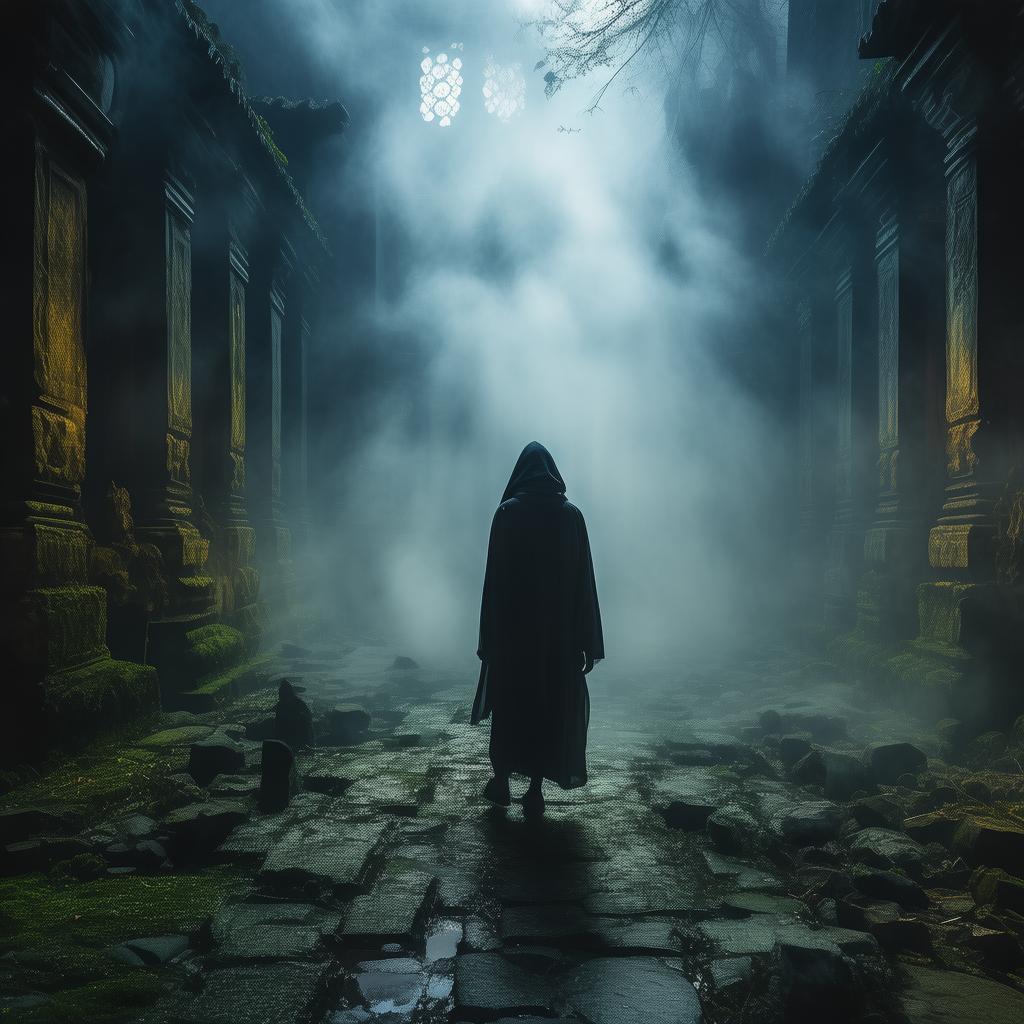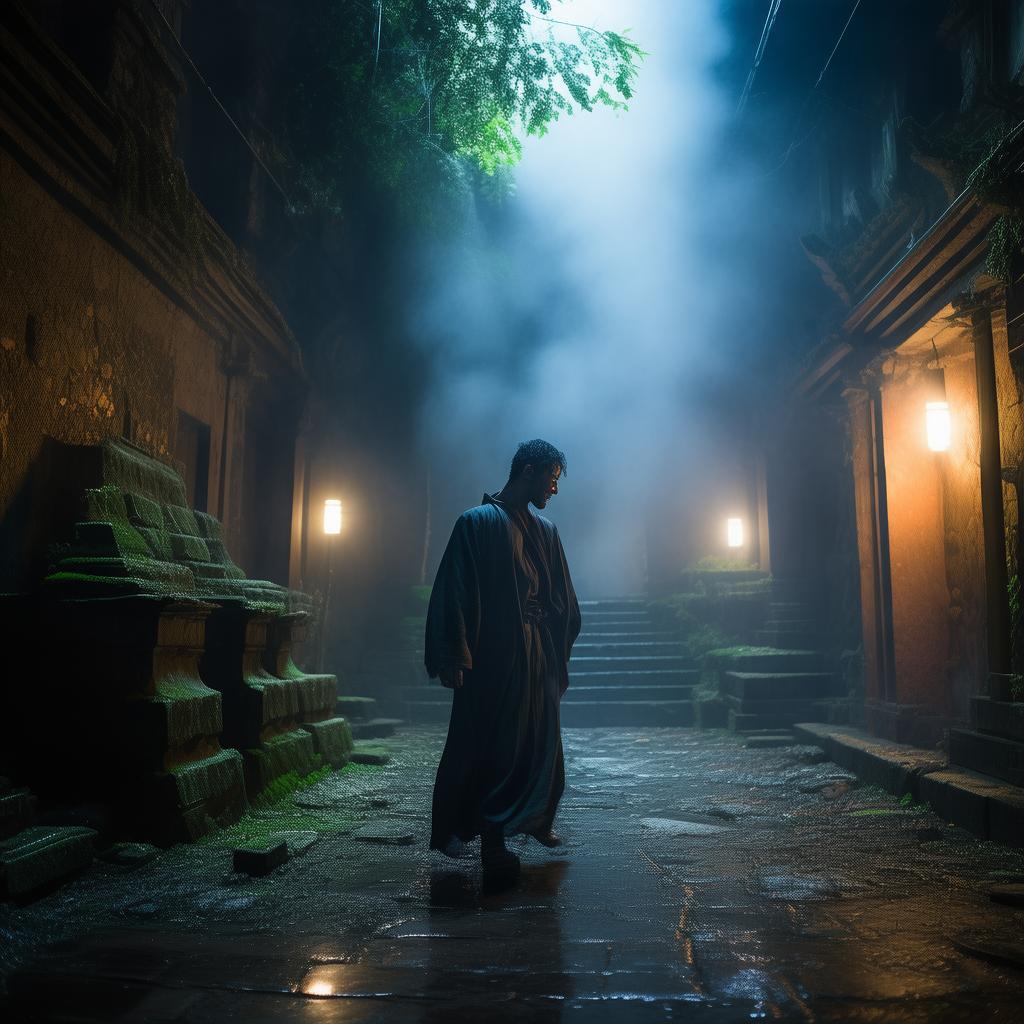The Shadowed Altar of Dili
In the heart of Dili, the capital of East Timor, stood an old, dilapidated church. Its once vibrant steeple now drooped under the weight of neglect, and the stained glass windows had long since been replaced with sheets of rusted metal. This was the Church of Our Lady of Fatima, a site of historical significance, but now shrouded in mystery and forgotten by time.
Dr. Eliza Thompson, a historian specializing in the region's tumultuous past, had always been intrigued by the church. It was said that during the Indonesian occupation, the church served as a sanctuary for those seeking refuge from the conflict. The stories of the church were as enigmatic as they were numerous, and Eliza had long harbored a desire to uncover the truth behind them.
One rainy afternoon, Eliza decided to venture into the church, her curiosity finally pushing her beyond the threshold. The air was thick with the scent of mildew, and the echoes of her footsteps echoed through the empty nave. She moved cautiously, her flashlight cutting through the darkness, illuminating the worn wooden pews and the faded frescoes that adorned the walls.
As she navigated through the labyrinth of corridors, Eliza's flashlight caught sight of an old, ornate altar. It was unlike any altar she had seen before, its surface etched with strange symbols and covered in a layer of dust. Intrigued, she approached the altar and ran her fingers over the symbols, feeling a strange chill brush against her skin.
Suddenly, the church seemed to come alive around her. The air grew colder, and a faint, ghostly light flickered above the altar. Eliza's heart raced as she realized she was not alone. She spun around, but the church was empty. It was as if the very walls were watching her.
Determined to uncover the mystery, Eliza began to research the altar's history. She discovered that it was a relic of a forgotten ritual performed by the church's first priest, a man named Father Manuel. The ritual was said to invoke the spirits of the ancestors, and it was believed that those who participated would be granted immense power.
As Eliza delved deeper, she found herself drawn into a web of secrets and lies. The church had been a focal point for political intrigue during the occupation, and the altar had played a crucial role in the power struggles of the time. The symbols on the altar were not mere decorations but a code, a key to unlocking a hidden power that had been dormant for decades.

Eliza's investigation led her to a clandestine meeting with an old man named Joaquim, who claimed to have been a participant in the ritual as a child. Joaquim's eyes were filled with fear as he recounted the events of that fateful night. The ritual had gone awry, and the spirits had taken a hold of the altar, binding it to the church and its surroundings.
As the story unfolded, Eliza realized that the altar was not just a relic of the past; it was a living entity, a conduit for dark forces that had been unleashed upon the region. The church was no longer a place of solace but a place of dread, a haunting reminder of the region's dark history.
Determined to put an end to the enigma, Eliza devised a plan to reverse the ritual and free the altar from its curse. She gathered a small group of trusted allies, including Joaquim, and they set out to perform the reversal ceremony.
The night of the ceremony was tense and fraught with danger. As they chanted ancient words and performed the ritual, the church seemed to come alive once more. The air crackled with energy, and the symbols on the altar glowed with an eerie light.
In a dramatic twist, Eliza discovered that she was not just a historian; she was the descendant of Father Manuel, the man who had originally performed the ritual. This revelation allowed her to complete the ritual with the necessary power, and the altar's hold on the church was broken.
The church returned to its former state, and the supernatural enigma of the altar was finally laid to rest. Eliza and her allies left the church, forever changed by their experience. The church, once a place of fear and dread, was now a testament to the resilience of the human spirit and the power of truth.
The Shadowed Altar of Dili was a chilling reminder that the past is never truly gone, and that the echoes of history can still be heard in the most unexpected places.
✨ Original Statement ✨
All articles published on this website (including but not limited to text, images, videos, and other content) are original or authorized for reposting and are protected by relevant laws. Without the explicit written permission of this website, no individual or organization may copy, modify, repost, or use the content for commercial purposes.
If you need to quote or cooperate, please contact this site for authorization. We reserve the right to pursue legal responsibility for any unauthorized use.
Hereby declared.









